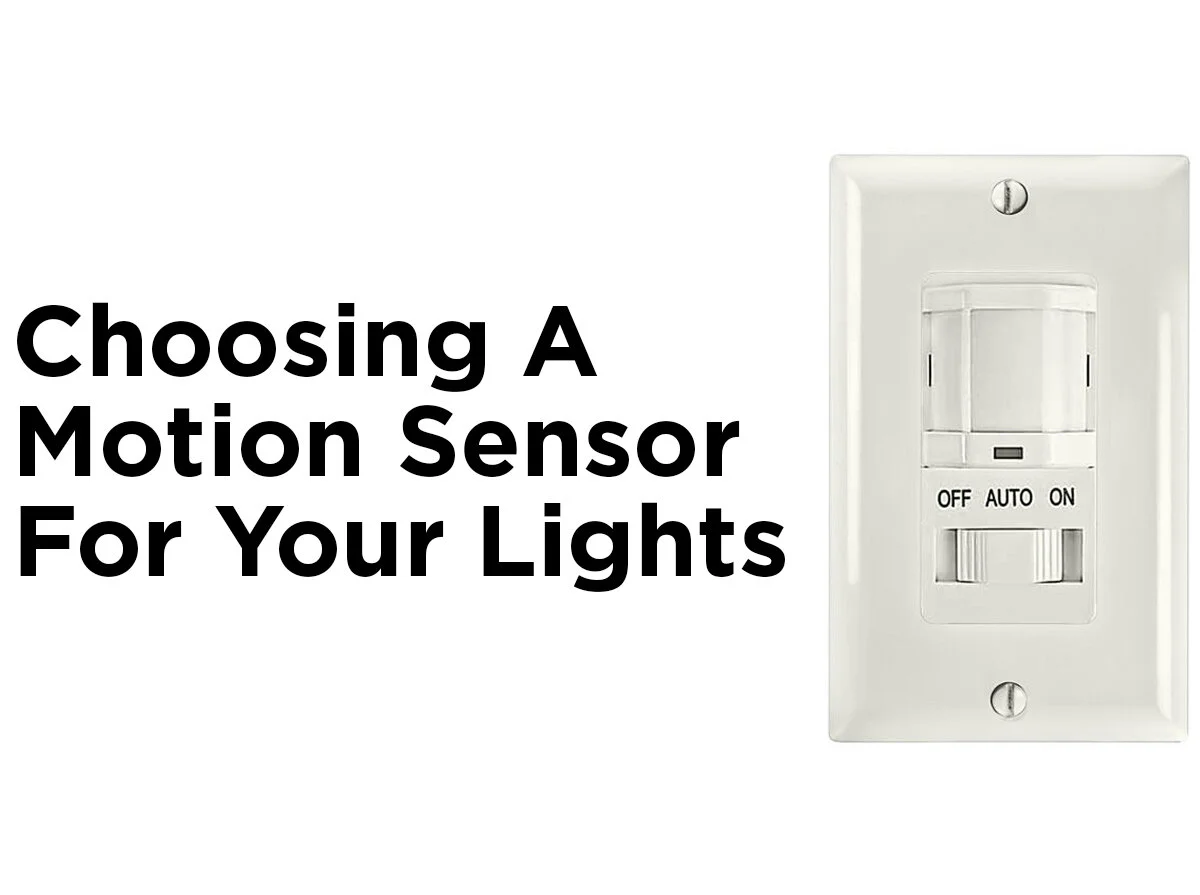How Do Motion Sensors Work?
There are several types of motion sensors that each detect motion a little differently, with pros and cons for each. By ensuring lights are only on when needed, motion sensors are an easy addition to lower energy costs without needing a complete lighting overhaul. They’re ideal for rooms where lights are accidentally left on, such as offices, or rooms that you often enter with your hands full, like laundry rooms or supply closets. However, not all motion sensors are created equal. There are a couple different types and even more technologies to choose from depending on where and how you need to use them.
Active Sensors
Active sensors use infrared energy, radar waves, or other methods to detect changes in the rooms they cover. The three most common active sensors are microwave, ultrasonic, and tomographic. Ultrasonic sensors are the most used type in lighting and emit sound waves higher than a human can hear although dogs, cats, and the occasional fish can. Microwave sensors emit microwave pulses. This type of sensor is extremely sensitive and is often used in security systems. However, since they can sometimes “see through” non-metallic objects and walls, they are prone to false alarms if not accurately calibrated. Tomographic sensors emit radio waves and are typically used in commercial areas that need a high level of security since they can cover a very large area. Once installed, an active sensor sends out pulses of energy and measures the time it takes for those energy pulses to bounce back when they hit objects in the room. It’s similar to how a bat uses echolocation to see at night. These sensors are not restricted to line of sight and can detect minor movements. However, they are prone to false alarms. Because of this perpetual back and forth, these sensors consume a lot more power than passive sensors.
Passive Infrared Sensors
There is only one kind of passive sensor: passive infrared (PIR). This type of motion sensor detects changes in infrared radiation, also known as heat, emitted by any and all warm-blooded creatures as well as the sun. PIR motion sensors contain a thin layer of pyroelectric material and two slots, which is what reacts to the IR radiation. The sensor remains idle while both slots are detecting the same amount of heat: the calibrated ambient amount of the room. When a person or large enough animal walks through the covered area, it creates a “positive differential” charge between the two slots. This charges are what triggers the sensor. PIR sensors can be calibrated to go off only at certain heat levels, so small fluctuations don’t cause the lights to come on. This prevents the sensor from triggering when small animals enter the room or when the sun rises and warms the room. The coverage for PIR sensors is directional and limited to line-of-sight, so make sure no part of the space you want detected is blocked by partitions or shelves.
Dual Technology Sensors
Dual technology, or dual-tech motion sensors combine ultrasonic and PIR sensing technology. These sensors are less likely to cause false alarms and are typically used in areas where using just one technology isn’t viable, such as offices, classrooms, and rooms with high ceilings or tall furniture. Dual-tech sensors only turn the lights on when both the ultrasonic and PIR sensors detect occupancy, but require just one technology to remain on to help ensure the lights don’t turn off while the room is occupied. This way the small movements like someone typing is picked up by the ultrasonic waves, but the person walking past the door in the hallway is ignored.
Occupancy vs Vacancy
Lighting motion sensors come in two main types: occupancy and vacancy. Occupancy sensors automatically turn on the lights when the sensor is tripped and turn off after a programmed amount of time of no movement. This type of sensor is best used in high-traffic rooms like bathrooms and restaurant pantries. Vacancy sensors, also turn the lights off when a room is vacant and no motion is detected, but you must manually turn the lights on when entering. Conference rooms and rooms with large windows that get plenty of natural daylight most of the day benefit from this type of motion sensor.
Need help planning a hands-free lighting upgrade for your home or office? Drop your quandaries and conundrums in the comment section below or call us at 1-800-624-4488 to speak to one of our lighting experts.







